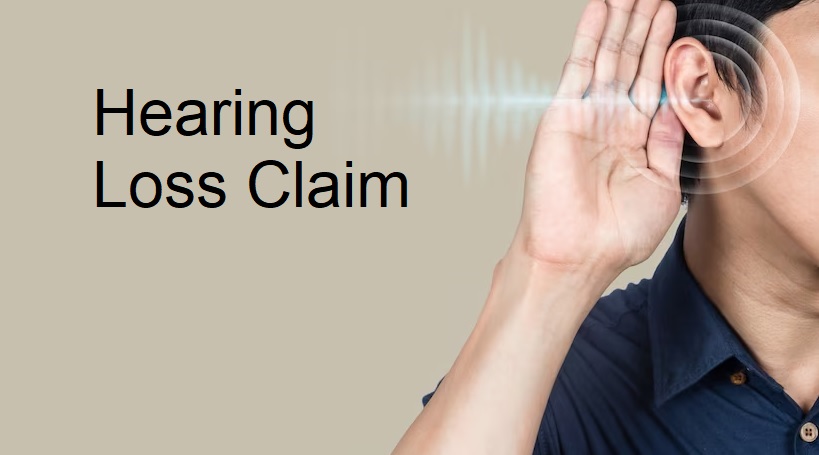Navigating Liability Claims as well as Hearing Loss Claims

Understanding the murky waters of work injury Queensland work cover compensation as a worker is essential if they have suffered from negligence or hearing loss, which is an invaluable skill. An example of a negligence suit occurs when an injury results from an employer’s failure to meet safety requirements. Some cases emerging as claims are hearing loss claims, which can be categorized as work injury claims since the work environment is changing. Such statements are essential for workplace safety and fair payment.
What are Negligence Claims?
Negligence claims are basically assessed under the WorkCover for Queensland by the employer’s legal obligations to provide safety and security in the workplace. Failure to fulfil this duty leads to employees being adversely affected by workplace injury and may initiate negligence cases against the employer. Typical circumstances include lack of experience, unsafe equipment, and hazardous working premises. The incidence of negligence litigation cases then establishes precedence by awarding the victims payments that require high levels of safety.
Eligibility and Filing Process for Negligence Claims
The legal declaration of negligence is applied to QLD WorkCover claims for job injuries that result from inactivity rather than the employer’s action. However, the filing system pursues substantial proof, such as incident reports and medical records. Employees should apply for negligence claims for QLD WorkCover by a strategic approach first: by contacting their employer and seeking medical help.
Understanding Hearing Loss Claims
WorkCover realization to QLD is concerned with the damages resulting from work-related instances. High frequency, long-term exposure to loud sounds, and failures in preventive measures are also part of the problem. They include, among others, temporary and permanent hearing losses for job-related claims to explain that preventive measures are necessary for high-risk jobs.
Eligibility and Filing Process for Hearing Loss Claims
To be eligible for hearing loss compensation, workers must show that their hearing loss is due to their exposure to noise at work. These claims require several processes, such as obtaining the diagnosis, computing noise levels at the workplace, and meeting deadlines. Failure to document hearing loss and report on time according to QLD WorkCover claims qualifications may result in the rejection of these claims.
How Negligence Can Cause Hearing Loss Claims?
Compensation lawsuits for hearing conditions are sometimes due to negligence. For instance, firms not complying with hearing conservation regulations and safety measures may incur costly work injury litigation. Taking cases of hearing loss claims across the globe, there have been several instances when employers have been found guilty due to carelessness, underscoring the economic and legal implications.
Preventive Measures to Avoid Negligence and Hearing Loss Claims
Workplaces can minimize the risk of carelessness and hearing loss lawsuits if employers adopt appropriate safety measures. The regular training, the provision and use of safety equipment, and the noise exposure assessments are also crucial. These occupational injury claims prevention techniques mitigate workers from occupational injuries and potentially eliminate future QLD WorkCover claims.
Legal Aspects
Rights and Responsibilities Under Negligence and Hearing Loss Claims
People with QLD WorkCover indemnity rights have the right to have a safe workplace and have a right to and often do, file negligence and hearing loss claims if injured. Organizations must also ensure safety regulations are enforced and react promptly when safety threats arise. The consequences can even be legal and financial impacts of wrongdoings, thus highlighting the importance of proactive risk management.
Case Studies and Legal Precedents
Reviewing several significant negligence cases in the litigation claiming loss of hearing at the workplace shows the implications of inadequate occupational safety. They also raise issues concerning existing laws and how claims of Queensland WorkCover are significant in the defense of workers’ rights. Understanding prior events prevents incidents from happening again as it guides and informs future policy and safety changes.
Managing Negligence and Hearing Loss Claims
Intervention is also crucial when harm is incurred due to negligence in the workplace. Employees should also report seeking medical help, register it, and inform their employer. Here are several stages that apply to negligence and hearing loss claims under QLD WorkCover:
Long-Term Management and Support
Negligence and recovery: Assessing support for rehabilitation and support networks for hearing loss. Within QLD WorkCover claims, workers can obtain medical treatment and counseling and return to work programs. Hearing loss claims can easily be avoided by continuously monitoring work hazards and regular occupational safety inspections.
Conclusion
This knowledge of negligence and obtaining compensation for hearing loss claims will help you deal with Queensland WorkCover and find ways of making your workplace safe. The first and second claims reinforce the notion that it is vital to be precautious and clearly understand the legal processes when filing work injury claims.
New developments in prevention and technology, thus, hold the potential of cutting down the number of negligence and single claims associated with hearing loss. Future research and policy formulation will also impact the Queensland WorkCover processes regarding sourcing funds for injury compensation in addition to the safety of workers.














